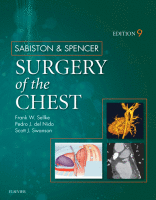Physical Address
304 North Cardinal St.
Dorchester Center, MA 02124

Background According to the Centers for Disease Control and Prevention (CDC), congenital heart disease (CHD) is the most common type of birth defect, affecting 1% of the population (40,000 births/year). CHD is the leading cause of illness and death associated…

Although significant progress has been made in the care of patients with pediatric and congenital cardiac disease, complications and death still occur. As a result, optimization of outcomes remains a constant goal. Substantial effort has been devoted to advancing the…

The progress in the management of cardiac arrhythmias related to congenital heart disease (CHD) over the past 40 years mirrors the improvement in outcomes associated with heart disease in children. During the earliest era in the management of CHD, postoperative…

Patients with congenital heart disease require lifelong surveillance. The number of adults living with congenital heart disease continues to grow, in part because of advances in the diagnosis and treatment of congenital heart lesions. There are more than 1 million…

Historical Aspects In an 1866 report titled “Concerning a very rare case of insufficiency of the tricuspid valve caused by a congenital malformation,” Dr. Wilhelm Ebstein (1836-1912), a German physician, described the unusual cardiac findings of a 19-year-old laborer who…

Single-ventricle circulation is a generic term that covers a wide range of structural cardiac abnormalities. It is widely accepted that the definitive surgical palliation for these hearts is the Fontan circulation, whereby the pulmonary and systemic blood flows are in…

Hypoplastic left heart syndrome (HLHS) is characterized by a generalized underdevelopment of the left ventricle and its dependent structures: the mitral valve, the aortic valve, and the preductal and ductal aorta. Because the anatomic severity of HLHS constitutes a spectrum…

This chapter treats only the congenital anomalies of the mitral valve to the exclusion of the mitral valve in atrioventricular (AV) discordance, the mitral valve in univentricular hearts, and the mitral valve of the hypoplastic left heart syndrome. It also…

Congenitally corrected transposition of the great arteries (ccTGA) is a rare defect, seen in approximately 0.5% of patients with congenital heart defects. It entails discordance of the atrioventricular (AV) connections and discordance of the ventricular arterial connections, so there is…

History Transposition of the great arteries (TGA) was first recognized and described more than 2 centuries ago. Although reference was made to malposition of the aorta and pulmonary artery by Steno in 1672 and Morgagni in 1761, the anatomic description…